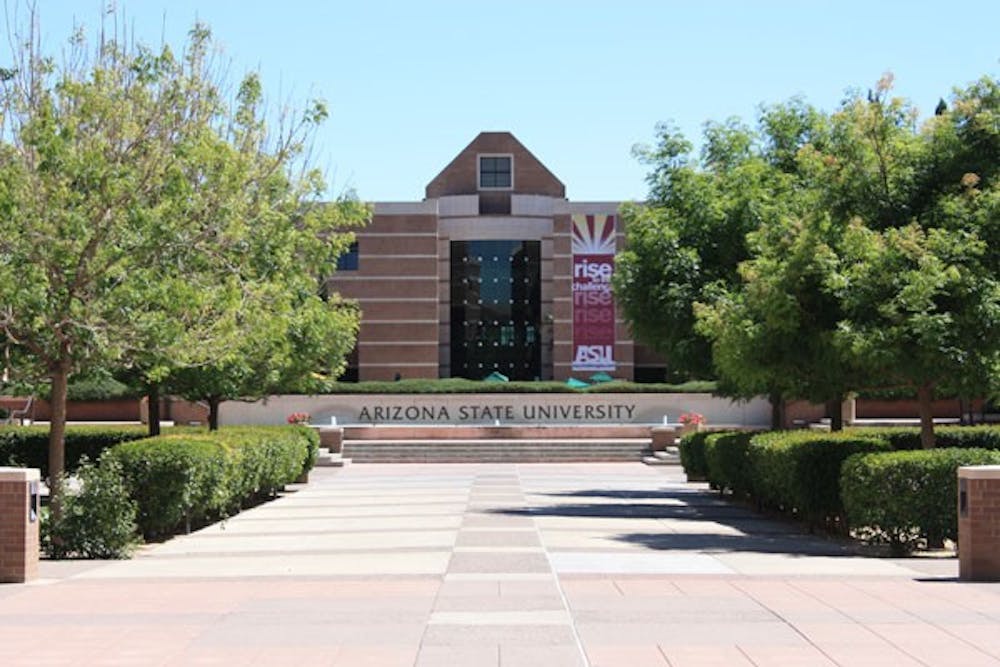As the spring semester comes to an end, leaders at ASU’s West, Downtown and Polytechnic campuses are working to bring a number of changes to their student bodies.
University leaders are in the process of developing plans to provide expanded student housing at the West campus, said ASU spokeswoman Terri Shafer.
The new residence halls would offer up to 600 beds, she said.
Students at the West campus have also agreed to a recreation fee that would allow for a new recreation center to be built on-campus, though no final arrangements have been made, Shafer said.
Jake Burggraff, an Interdisciplinary Arts and Sciences junior who served on West campus Dean Elizabeth Langland’s advisory board, said the recreation center may be similar to the Tempe campus’ Memorial Union and house a number of amenities, including a pool. A track might also surround the facility.
Details are not currently available because campus leaders are still discussing possible designs. No official plans have been made.
“I think all the changes will be great,” Burggraff said. “They’re really going to help create a new sense of student life here.”
West’s student leadership, formally known as ASASUW but now Undergraduate Student Government at the West campus, has several plans of its own for the campus.
In conjunction with ASU President Michael Crow’s call for more student participation, president Daniel Hatch said he will work to help students to play a bigger part in determining the future of their campus.
“We’re working very hard to have every student on West registered to vote,” he said. “That’s one of our main goals.”
USGW is working to get a polling station at the campus, Hatch said.
“We want the students to just be able to go into the library and vote between classes,” he said.
In addition, Hatch said he hopes to improve communication between students and their leadership by providing more options for interaction through Blackboard and the creation of kiosks operated by USG members.
The kiosks would be spread across the campus and would allow students a chance to discuss issues with student leadership, he said.
USGW is also aiming to cut back on textbook costs for students by initiating a textbook lending program.
The campus’ student leadership had its funds cut from about $380,000 to about $240,000. Despite this, it plans to work with leaders at the other campuses to buy a printing press.
“Because of the cost it might be situated in Tempe,” Hatch said. “But we would like to get a printing press at West.”
In spite of such reductions, he said planned developments will greatly benefit the campus.
Scott Stine, a film production senior, said he believes the University is making a genuine effort to become a part of the community.
Such work will hopefully bring more students to the University’s various campuses, he said.
“They’re doing a lot to make students come here,” Stine said.
Burggraff said he agrees.
In spite of economic setbacks, the West campus continues to succeed, he said.
“The biggest problem they had was the economy,” Burggraff said. “The people have really responded.”
ASU’s Downtown and Polytechnic campuses are also discussing changes.
At the Downtown campus, a nearby YMCA that students have free access to may expand, said Olga Lykvar, who is director of administration for the Associated Students at ASU Downtown.
The YMCA, which serves as students’ recreation center in partnership with the University, may grow to include offices for student government as well as other clubs and organizations.
The University’s new facilities fee, which was approved in March, would in part fund the expansion, said Beth Wischnia, vice president of ASASUD.
“With the facilities fee, hopefully we’ll see more space for student organizations, because that’s been a big concern among student leaders on campus,” she said.
Leaders at the Polytechnic campus are meeting Tuesday to discuss the development of their own recreational facility, ASASUP President Matt McCoy said. The meeting will bring together members of the campus’ Programs and Activities Board, as well as the upcoming president of Polytechnic’s student government, business administration and supply chain management senior Dominick Hernandez, McCoy said.
Tuesday’s meeting also aims to introduce leaders of the various groups to one another and improve communication between the organizations, he said. Communication, he said is key to the development’s success.
“That’s our first step in the facilities direction,” he said.
The recreation center should be completed in approximately two years, McCoy said.
Reach the reporter at jsnyder3@asu.edu





